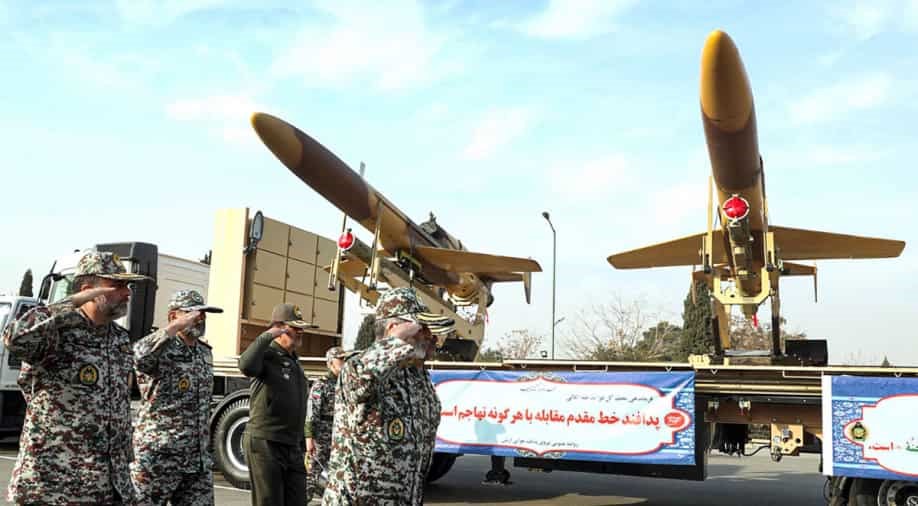Description

Disclaimer: Copyright infringement not intended.
Context
- Iran has unveiled advanced Karrar combat drones armed with air-to-air missiles, enhancing its air defence capabilities.
- Dozens of Karrar drones with an operational range of up to 1,000 kilometres will be deployed along the country's borders.
Details
- Majid Air-to-Air Missiles: The Karrar interceptor drone, initially introduced in 2010, now incorporates the 'Majid' thermal missile, which reportedly has an eight-kilometer range. This missile was developed entirely within Iran.
Concerns Over Iran's Military Developments
- Various nations, particularly the United States and Israel, have expressed concerns regarding Iran's continuous development of its military arsenal, dating back to the 1980s, initially stemming from its war with Iraq.
- There are allegations that Iran is supporting allies in the Middle East and supplying drones to groups like Hezbollah in Lebanon and Houthi rebels in Yemen.
- Additionally, there are accusations, which Iran denies, of supplying drones to Russia for use in the Ukraine conflict.
- In response to these alleged arms sales, Western governments have imposed multiple rounds of sanctions on Iran.
.jpg)
About Karrar
- The HESA Karrar is an Iranian jet-powered target drone manufactured by Iran Aircraft Manufacturing Industrial Company (HESA) since 2010.
- Derived from the American Beechcraft MQM-107 Streaker target drone, and potentially incorporating elements from the South African Skua, it was developed during the Ahmadinejad presidency.
Design and Features:
- Physical Structure: The Karrar features a small, clipped delta wing, a cylindrical, blunt-nosed fuselage, and twin arrowhead-shaped tailfins. It has a dorsal air intake for the engine and utilizes a rocket-assist system for takeoff, recovered by a parachute.
- Capabilities: While it's used primarily as a target drone for air-defense crew training, reports suggest it has evolved to carry armaments such as the Shahab-e-Saqeb missile and the Majid heat-seeking missile, extending its functionality to hitting air targets.
- Flight Characteristics: Capable of high and low altitude flight, day and night operation, and following pre-programmed flight paths or updated instructions during flight. It's purported to have an autopilot system with INS and/or GPS guidance and may possess terrain-following capabilities.
- Payload: The Karrar can carry a range of armaments, including bombs like the Mk 82 general-purpose bomb, anti-ship missiles such as the Nasr-1 or Kowsar, and satellite-guided glide bombs like the Balaban.
Operational History:
- Unveiling: Unveiled in 2010 by Iranian President Mahmoud Ahmadinejad, it was presented as a "long-range bomber drone," considered Iran's first long-range UAV.
- Export and Use: Reports indicate its export to groups like Hezbollah and its deployment in conflicts like the Syrian Civil War. It's been used in training exercises for various air defense systems and weapons.
- Debate on Capability: While Iranian sources tout its weapon deployment capabilities, some analysts question these claims, suggesting it's primarily a target drone.
- Ongoing Use: The Karrar continues to be employed in Iran's air defense force training, frequently utilized to test various surface-to-air missile systems and air-to-air missiles.

Conclusion
The unveiling of these advanced combat drones equipped with air-to-air missiles marks a significant development in Iran's defense capabilities, prompting international attention and raising concerns among some nations regarding the implications of Iran's military advancements and alleged arms dealings in the Middle East and beyond.
|
PRACTICE QUESTION
Q. The unveiling of advanced combat drones by Iran raises concerns regarding the implications of Iran's military advancements and alleged arms dealings in the Middle East and beyond. Discuss. (250 Words)
|













